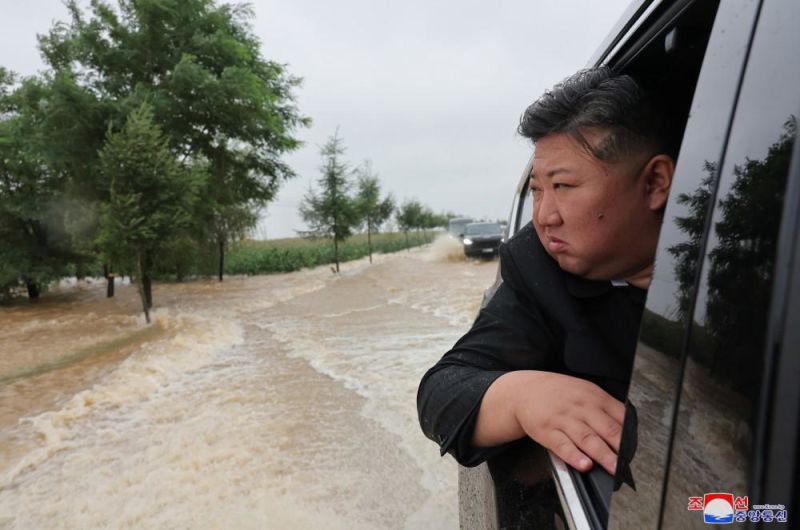As a potent and influential figure in North Korea, Kim Jong Un has been closely inspecting the response to the flooding caused by heavy rainfalls along the border region with China. The situation, which has necessitated the evacuation of thousands of people, has brought about unprecedented challenges, particularly during a time when the two nations are on high alert because of the geopolitical situation and the worldwide COVID-19 pandemic.
Rainfall in the Democratic People’s Republic of Korea (DPRK) is nothing new. However, the magnitude of the recent downpours has been alarming, translating to water levels in the Tumen river rising significantly above the danger mark. So far, the catastrophe has caused significant disruption, not only threatening human life but also damaging farmland and destroying infrastructure. The ongoing disaster has prompted the North Korean leader to take an active stance in the nation’s flood response operations.
Kim Jong Un’s highly publicized inspection visit to this flood-stricken region has put a spotlight on North Korea’s disaster management capabilities. During the inspection, several key issues have been identified. One of the crucial areas has been the country’s existing infrastructure, which appears woefully underprepared to operate under such catastrophic weather conditions. Poorly constructed houses and the lack of a robust drainage system are purportedly to blame for the widespread devastation.
The North Korean leader has underscored the importance of constructing solid structures that can withstand the harsh weather conditions, urging for the quick rebuilding of damaged homes and the bolstering of the national drainage system. Furthermore, the need to improve the future disaster management system has been highlighted, with experts calling for the implementation of early warning systems and improved emergency protocols.
On a strategic level, Kim Jong Un has urged measures focusing on the long-term management of flood risks, highlighting the need for the state to invest in advancements in technology and infrastructure planning. This could, for example, include employing more accurate weather prediction systems and watershed management plans to avoid the scale of devastation that the current floods have caused.
Another critical aspect noticed during Kim Jong Un’s visit is the urgent need for international assistance to handle the current crisis. North Korea, like many developing countries, has limited resources and capabilities to cope with disasters of this magnitude. Consequently, the floods alongside decades of economic hardship have raised questions about what moves North Korea might make to seek foreign assistance to manage these crises.
In light of these developments, Kim’s inspection is intended to demonstrate an image of leadership. He is shown as actively involved and concerned about the wellbeing of the North Korean people, especially in such challenging times. Moreover, his engagement serves to assure the citizens that their leader is fully committed to their safety and recovery, instilling a spirit of resilience in the face of adversity.
Despite these moves, critics point out that while the DPRK’s demonstrated capacity to manage this disaster is commendable, the focus should also be on proactive rather than reactive measures. A more comprehensive approach that includes both quick responses to disasters and long-term strategies for disaster risk reduction could result in less harm in future incidents.
In conclusion, North Korea’s Kim Jong Un’s ‘inspection’ of the flood response serves as a vivid reminder of the intermittent and catastrophic nature of natural disasters. It’s also a lesson for countries worldwide that anticipation, preparation, and robust structures can significantly aid in mitigating increasing climate risk impacts. His attention to this crisis serves as a wake-up call for the need for enhanced disaster risk reduction policies within an international framework, even for nations previously viewed as closed-off or isolated.




